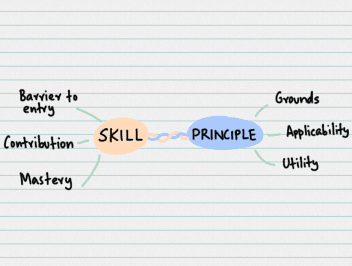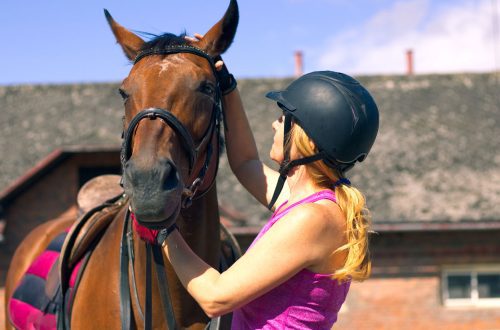
Work on relaxation and balance: theory and practice
Work on relaxation and balance: theory and practice
When a rider first mounts a horse, his main concern is to stay in the saddle. Everyone is afraid of falling, especially at the beginning of training. Whether you are a student or an instructor, you must be aware of this fear and understand that it is completely normal.
Fear of falling creates both mental and physical stress. That’s why rRelaxation and balance are the first skills that riders must develop as they progress through the thorny path of riding. In a way, they are like the proverbial chicken and egg – which came first? Without relaxation, it is difficult for the rider to balance over the horse. Without good balance, it is difficult for an athlete to relax. As balance improves, riders develop greater confidence that they will not fall. This confidence, in turn, helps to minimize “cling” to the horse and the tension that prevents the rider from staying in the saddle and contributes to “off balance” riding.
To relax, you must feel every part of your body—every muscle, every joint—and learn to find any places where you are tense. When you can let go of all your involuntary tension, you can move on to the second level of the Riding Tree. When you can stay relaxed above the horse’s center of gravity, you will be in balance, which means you can stay in the saddle.
Basically, the horse’s center of gravity is right where you sit. If you pinch the horse with your legs or hips, hang on the reins to stay there, you are not balanced. Good balance requires both relaxation and centering. You will need both vertical balance and lateral balance.
Vertical balance refers to the position of the upper body. When you are vertically balanced, you don’t lean too far forward or fall back.
Lateral balance assumes that the pressure of your sitting bones on the saddle is equivalent to the right and left, you do not slide or move from side to side.
To maintain this centered alignment over the horse’s center of gravity, the rider needs to engage all the necessary muscles correctly, but the resulting muscle tension must be “athletic” rather than “nervous” to prevent relaxation. The main muscle groups we use to maintain alignment or balance in the saddle are the upper and lower abdominal muscles.
Your body should remain relaxed and centered over the horse’s center of gravity. At the same time, its alignment can change depending on the direction, speed and gait of the horse. This is especially true when you finally reach the higher levels of any equestrian discipline. For example, when the horse leaves the ground before jumping, the rider’s upper body folds forward because he has to realign his body to stay above the horse’s center of gravity. In the same way, the barrel racing rider sits “heavier” on one of the seat bones when the horse changes direction, and the reining rider puts weight on both bones back, performing a sliding stop. Riders reorganize their bodies to stay above the horse’s center of gravity and balance as the horse is forced to change balance as it performs at higher levels.
Once you are relaxed and balanced, you can begin to work on the movement of the horse at the walk, trot and canter. Your communication with the horse goes to a new level. You gain the ability to use assistive controls that ask the horse to perform certain more complex elements. As your communication with your horse improves, you will begin to pay attention to rhythm and timing, coordinating controls for greater precision. Finally, instead of just asking for what the horse already knows, you can teach him something new. At first, this goal may seem unattainable, but anything is possible – you just need to keep working!
Being relaxed on a horse doesn’t mean you have to sit like a sack. Balanced riders must develop a sense of where their body is in relation to the horse’s center of gravity (and they must be able to do this by looking straight ahead, not down). They also need to develop “muscle memory”, the unconscious tension and relaxation of the right muscles with just the right effort, which allows them to maintain balance in motion in any gait or in any trajectory of riding, without grabbing the horse’s sides with their legs or holding on to the reins to stay in the saddle. .
There are a number exerciseswhich riders can use to help develop the “muscle memory” needed to stay balanced on horseback. These include:
1. Position of the frog. The rider raises his knees up and sits in this way. This will help you find the middle of the saddle without pinching the horse with your legs.
2. Position of the dog. The rider lifts his hips from the saddle (like a dog “lifting a leg”). This will help you find the middle of the saddle without pinching the horse with the sluice.
3. Riding on two counts. Instead of making the usual movements at the posting trot, the rider stands two counts and sits at one count of the trot. This constantly changes the diagonal under which he eases and prevents him from using the rhythmic effort of either hind leg as a “crutch” to maintain balance.
4. Riding without stirrups. Riders can work on this alone, but the best results are achieved when lunging. So you can work not only without stirrups, but also without a reason and concentrate entirely on your landing. Start with a walk (in both directions) and gradually progress to trot and canter as you improve your balance.
Riders riding English saddles, working on balance to avoid grabbing at the reins, can attach a strap to the saddle rings at the front and use it to seat themselves deeper in the training trot or to maintain balance if they start to slip out of the saddle. The rider may hold on to the strap when first riding without stirrups and reins on the lunge. When he feels safe enough, he can let go and make the task more difficult: ride with his arms outstretched, arms up or in front of him, with body turns left and right.
Speaking of balance exercises, I I don’t recommend riding bareback to my students, since such riding encourages an unbalanced rider to grab onto the horse with their feet. A good saddle helps the rider to sit correctly and this should be learned from the very beginning.
Perfectly contribute to the development of balance and exercises that can be done while not in the saddle. Many people cannot stand or jump on one leg or simply squat without losing their balance. Any exercise that helps them develop balance on the ground will also benefit them in the saddle.
A good balance exercise is common squats. First, you can perform them near the wall, resting against it, and then, as the muscles and balance develop, and without it. In the end, you can make progress that will allow you to squat on one leg, holding the other in weight in front of you.
contribute to the development of balance trampoline training, yoga, roller or regular skating, as well as sports that require balance, such as martial arts.
Don’t be surprised that as you grow as a rider, you’ll have to come back to work on balance and relaxation over and over again. You may feel relaxed and balanced in one gait, but the instructor will bring in another and your old problems will come to the fore. You may feel relaxed and balanced on only one particular horse, or start working outdoors after wintering in an indoor arena, cross-country after years of riding on arena ground, etc. As you steadily work to create your independent fit, these changes will have less and less effect on your balance and relaxation.
When working on balance, one more aspect must be taken into account.
Riders who do not have a good sense of balance cannot follow the movements of the horse. Unbalanced riders tend to keep themselves in the saddle by grabbing the horse’s sides with their legs, hips, or hanging from the reins. Not having their own good balance, they interfere with the balance of the horse and, as a result, the development of his movements. The horse’s ability to successfully demonstrate its abilities is significantly reduced.
A rider who sits on a school veteran or retired athlete can do without good balance. That is why these horses are so valued by instructors. They are patient and athletic enough to make up for the shortcomings of the rider. Their forgiving nature makes them great companions for both beginners and more experienced riders with insecurities that make it hard for them to relax.
Another thing is a young horse. Even if he has an incredibly good natural balance to begin with, any young horse will experience balance problems once saddled. She must learn to move not by herself, but by carrying the weight on her back. Depending on the temperament and level of preparation at this point, the young horse may be anxious or confused. If its rider is confident, relaxed and has good balance, the horse’s first impressions will be positive. However, if the rider is somewhat unbalanced, the young horse may become nervous or fearful. This is just one of the many reasons why young horses and beginner riders are not a great combination.
A trained older horse that is out of shape, or a horse whose muscles are unevenly developed for whatever reason, may also have balance problems until their fitness and core muscles improve. Under an unbalanced rider, these horses may develop incorrectly.
Understanding how a rider’s balance can affect a horse’s movement can help both riders and their instructors.
An unbalanced rider usually:
- оgets tired of the movement of the horse;
- falls far forward;
- collapses to one side, or
- shifts weight to the wrong ischium.
When the rider is out of balance, the horse becomes uncomfortable and uncomfortable. Depending on age, experience and temperament the horse usually tries to avoid it feelings of discomfort in one of several ways:
- уspeeding, jumping out, running away from under the rider;
- slow down or even stop;
- turning or moving away from the line when the rider intended to go straight;
- turning more or less than the rider intended, or
- turn in the other direction.
Thus, if a horse is excitable and nervous, its “flight” instinct is likely to be much stronger than its “fight” instinct. If the rider’s weight is shifted far back, the horse doesn’t just get uncomfortable. The rider thus “opens the door for her and invites her to escape.” These horses seem to be saying, “Being out of balance is scary. I’m running away from here.”
In the same way, a rider who, losing balance, falls forward, closes this “door”, closing the horse and the way forward. If you block the horse completely, he will probably stop, while as if telling us: “Agree your actions if you need an answer from me.”
When a rider gets off balance and puts their weight on the wrong seat bone, other things that affect the balance happen. The rider may shift the chest so that it is in front of the hips, or perhaps allow their shoulders to drop forward and block the horse from turning in the appropriate direction.
In all these cases, the reaction of the horse becomes the key to the rider’s balance problem. If a horse shows you any of these reactions, pay attention to your balance and body position before you blame him.
When a rider sits in the saddle, before starting to move, he needs to properly position his body in the saddle. The upper body should be pulled up, but not enslaved. Be careful not to arch your lower back. The rider should feel an equal amount of weight on both sitting bones. Joints should be free and elastic. This allows the leg to drop down and open the hip joint. When viewed from the side, it should be possible to draw a straight line from the rider’s ear through the elbow, thigh to the ankle bone.
Faith Meredith (http://www.meredithmanor.edu/); перевод Valeria Smirnova.





